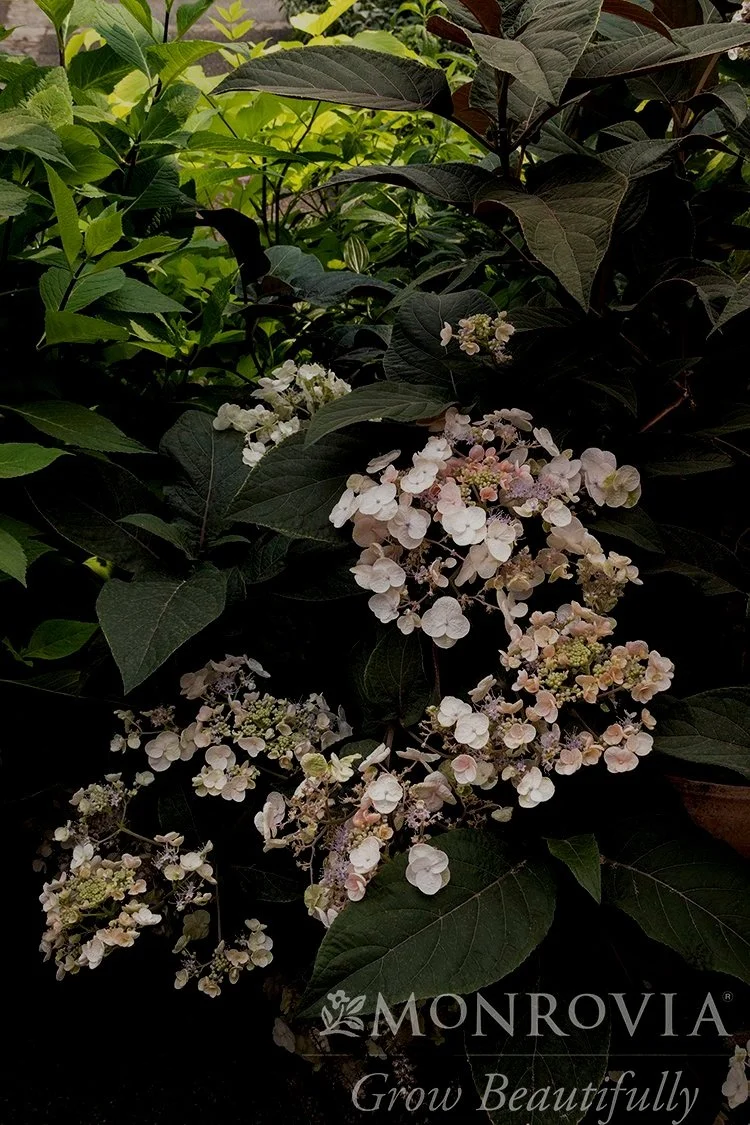Hydrangea aspera, commonly known as shrub hydrangeas, are more tropical looking than others with large, velvet-like, dark-green leaves and flower buds that are large.
Check out some of the many varieties we have to offer...
*Please contact us to find out more about our current availability*
We are a retail garden center servicing our local community & currently not able to ship our products
Burgundy Bliss
New foliage emerges a cool purplish color, eventually changing to green w/purple. Blooms in summer & reaches roughly 8 feet tall by 8 feet wide.
Plum Passion II
The first ever purple leaved Hydrangea. A unique shrub with greenish-purple new foliage, the leaves aging to deep purple with rosy purple undersides. Wispy flowers nicely contrast with the dramatic, colorful foliage. Excellent fall color. Needs full to partial shade & reaches roughly 5 to 6 feet tall by 5 to 6 feet wide in size.
Photo courtesy of Monrovia
Villosa
A variety that is more tropical looking than other hydrangeas. Has large, velvet-like, dark-green leaves & flower buds that are large, knobby & deep-rose in color. Blooming August through September, its large blue-purple lacecaps surrounded by mauve florets seem almost iridescent in appearance. Bees are much more attentive to the rough-leaf hydrangeas than other hydrangeas. Needs partial to full shade & reaches roughly 12 feet tall by 12 feet wide in size.




It is the week of the magical holiday we call Christmas, a time hopefully spent by all enjoying quality time with family and friends. As we have all hustled about preparing gifts, cleaning the house and cooking that special feast fit for any king or queen, don’t forget about that garden!